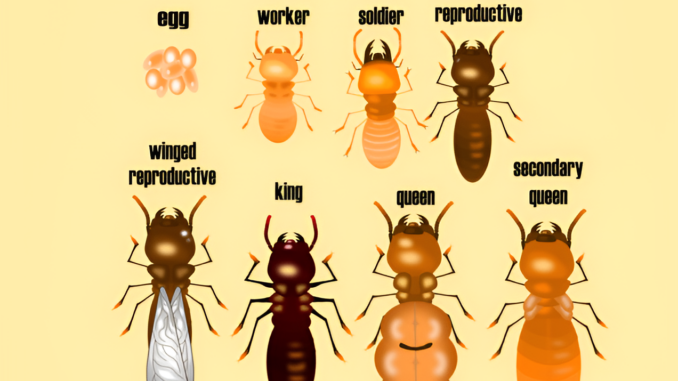
A Journey Through Time: Understanding the Reproductive Cycle of Termites in Zimbabwe
Termites, often overlooked and misunderstood, play a crucial role in the delicate ecosystem of Zimbabwe. These fascinating insects, known for their destructive and damage potential, are also vital components of the food chain and contribute significantly to soil health. But beneath their industrious nature lies a complex and fascinating reproductive cycle, a story woven into the very fabric of their social structure.
This blog post will delve into the intricate world of termite reproduction, focusing specifically on the species found in Zimbabwe. We will explore the different castes, the unique mating rituals, and the fascinating dynamics that govern the colony’s expansion and longevity.
The Caste System: A Symphony of Specialization
Termite societies are characterized by a strict caste system, where each individual fulfills a specific role vital to the colony’s survival. These castes, broadly defined, include:
The Royal Caste: The heart of the colony, comprising the king and queen, are responsible for the continuation of the species. The queen, often a towering figure compared to other termites, dedicates her life to laying eggs, ensuring the colony’s growth. The king, although smaller, plays a vital role in fertilizing the eggs and assisting the queen in her monumental task.
The Worker Caste: The backbone of the colony, these tireless individuals are responsible for all the colony’s essential functions, from foraging for food and building intricate nests to caring for the young and maintaining the queen’s chamber. Worker termites are blind and lack wings, devoting their entire existence to the colony’s wellbeing.
The Soldier Caste: The colony’s defense force, soldiers are easily recognizable by their large heads and powerful mandibles. Their primary role is to protect the colony from predators and invaders, ensuring the safety of the queen and the young.
The Alate Caste: The winged reproductives, also known as “swarmers,” are responsible for establishing new colonies. These termites develop wings during specific times of the year and engage in spectacular mating flights, seeking partners and new territories to colonize.
The Dance of Reproduction: A Complex Orchestration
The reproductive cycle of termites in Zimbabwe is a complex and intriguing process, marked by a delicate balance of social cues, environmental conditions, and hormonal triggers.
The Initiation: The decision to produce alates, the winged reproductives, is triggered by a combination of factors, including the colony’s age, food availability, and environmental cues such as rainfall. Once the conditions are favorable, the colony begins to produce alates, transforming worker termites into potential queens and kings.
The Grand Flight: During specific periods, often triggered by favorable weather conditions, alates emerge from the nest in a spectacular swarm, a breathtaking spectacle of millions of winged termites taking flight. This event, crucial for the colony’s expansion, serves as a vital mating ritual.
The Dance of Desire: Once in flight, the alates embark on a frantic search for partners. The males release pheromones, attracting potential mates. The dance continues as pairs break away from the swarm, searching for suitable locations to establish new colonies.
The Founding of a New Kingdom: After a successful mating flight, the alate pair sheds its wings, a symbol of their commitment to establishing a new colony. The queen lays her first eggs, marking the birth of a new generation and the beginning of a new dynasty.
The Cycle Continues: The newly established colony follows the same caste system as its parent colony. The queen’s sole focus becomes laying eggs, while the workers dedicate their lives to maintaining the colony’s needs. The soldiers protect the colony, ensuring the safety of the queen and her precious brood. The cycle repeats itself, leading to the expansion and perpetuation of the termite population in Zimbabwe.
The Importance of Termite Reproduction
Understanding the reproductive cycle of termites in Zimbabwe is crucial for several reasons:
Pest Management: By understanding the triggers for swarming and colony formation, we can better predict and manage termite infestations.
Ecological Balance: Termites play a crucial role in the ecosystem, contributing to soil health and providing food for other animals. Understanding their reproductive dynamics helps us appreciate their ecological importance.
Research and Conservation: Studying termite reproduction provides valuable insights into the evolutionary history of these fascinating insects and informs strategies for their conservation.
Conclusion
The reproductive cycle of termites in Zimbabwe is a complex and intricate process, demonstrating the remarkable resilience and adaptability of these often-misunderstood creatures. From their caste system to their dramatic mating flights, every stage of their life cycle is a testament to the intricate social structure and evolutionary success of these fascinating insects. By understanding their reproductive dynamics, we gain a deeper appreciation for the vital role termites play in the delicate balance of the Zimbabwean ecosystem.
